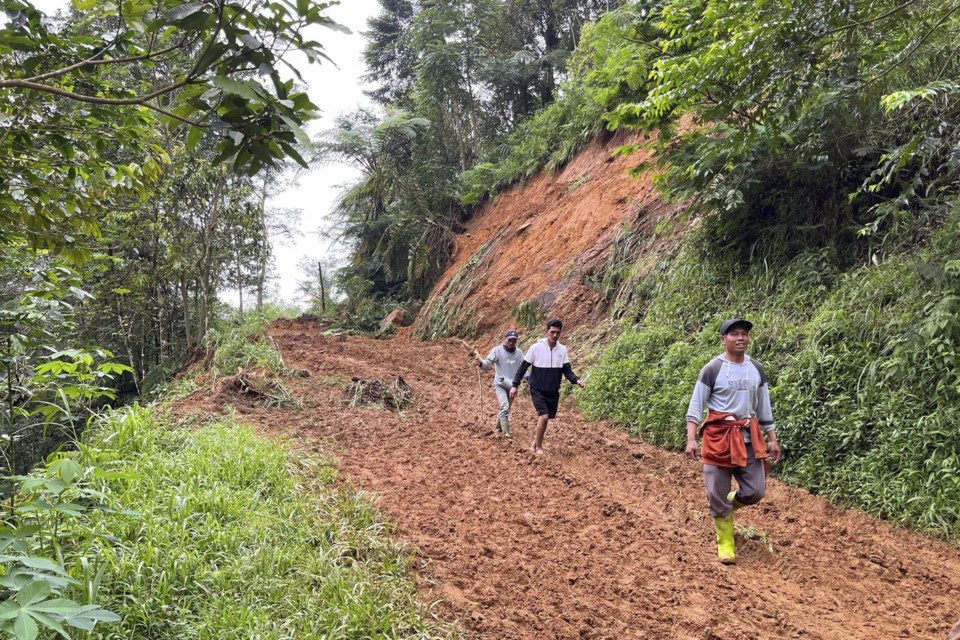Flash flooding and landslides on Indonesia’s main island of Java have killed and damaged villages and rice fields.
The nation is located in a busy earthquake zone and faces high levels of deforestation – factors that are linked to flooding and landslides, though it wasn't immediately clear if the areas hit are near mines or heavily logged areas.
A look at what makes landslides, why they happen with some frequency in Indonesia, and how Earth's warming climate may contribute to more in the future.
What is a landslide?
The British Geological Survey defines a landslide as a mass movement of material, such as rock, earth, or debris moving down a slope. Landslides can happen suddenly without any notice or slowly over time and can be triggered by heavy rainfall, erosion, or changes to the slope’s material that weakens its resistance to gravity. Heavy rain adds weight to the slope, making it more unstable, and can reduce the soil strength.
Where can landslides happen?
Factors that increase the likelihood of a landslide include the slope’s steepness; slopes that are being eroded at the base, which could be caused by the movement of an ocean or river; seismic activity like earthquakes; or other things that cause ground vibrations like mining and traffic. Certain rock types and soil particle sizes are also important factors that can determine how sturdy a slope is based on the amount of water the soil can absorb.
Why does Indonesia see so many landslides?
The current landslides and flooding are occurring in the middle of Indonesia’s rainy season, which typically lasts from October to March. Landslides are one of the most common natural disasters in Indonesia and their frequency is increasing due to heavy rainfall, earthquake activity and changes to the landscape such as mining, according to , a humanitarian information service provided by the United Nations Office for the Coordination of Humanitarian Affairs.
Java is a mountainous island with active volcanoes and a from 2019 reported the island sees the highest rate of landslides in Indonesia. More than 150 million people live on Java, an island smaller than New York state, which is home to roughly . That many people living in a small area that frequently sees flooding, earthquakes, and landslides heightens the risk for people and property.
Indonesia, and the largest producer of nickel and , has the highest amount of forest loss of all mining areas on the planet, according to the . Healthy forests can reduce the risk of landslides, whereas mining strips the topsoil and weakens a slope’s ability to withstand heavy rain and flooding.
Climate change and landslides
have found that landslides may become more frequent with climate change as a warming atmosphere holds more water vapor that can fall in heavy rains.
___
The Associated Press’ climate and environmental coverage receives financial support from multiple private foundations. AP is solely responsible for all content. Find AP’s for working with philanthropies, a list of supporters and funded coverage areas at .
Isabella O'malley, The Associated Press




